Advertising optimization and creation tips
Advertising creation precautions:
1. To preview the ad, ask yourself if you would be attracted to this ad while scrolling through your phone.
2. Regarding bidding, it is recommended to use automatic bidding.
3. The test budget should be equal to the customer unit price.
4. The material requirements are high-quality and simple and clear. It is recommended to use carousels or first image videos plus product detail feature display images.
5. Choose the appropriate location, including the M side and PC side. Do not select locations other than fb/ig newsfeed. For products such as mobile accessories, only choose the M side.
6. In the early stage, the positioning should be accurate, accumulate seed users to improve the advertising score, and the audience in the range of 100K-1M is more appropriate.
7. In the early stage, choose the Conversion Event as Add to Cart, and then switch to Purchase after accumulating a certain amount.
8. The text should be concise, stating the price, product features, and activities, allowing customers to quickly decide whether to buy.
9. Do not accelerate normal ad runs.
10. Use “Use Existing Post” for all the same advertisements. Accumulate within the same ad. You can also run a small budget PPE cumulatively.
11. Set up automatic optimization rules to prevent ads from going out of control.
12. There are too many A/B tests that can be conducted. Firstly, focus on testing the main products. Conclusions can be drawn from an advertisement that purely showcases products in one country.
13. For brands with high customer unit price entering the market for the first time, it is recommended to target new users with content or soft articles. For existing users, direct response or promotional advertisements can be used.
14. Use daily unique reach to prevent users from seeing the advertisement too many times.
Ad optimization:
1. Make evaluations when the impression volume exceeds 100,000 or after one day of publication.
2. Advertisements for e-commerce markets in Europe and America are unstable. It is recommended to reduce advertising on Fridays and promptly decrease the budget on weekends.
3. Focus on ROI. The expenditure should not exceed the customer unit price. A new site is evaluated with an ROI of 2.
4. If the expenditure does not reach the customer unit price, consider CPM. A conversion rate of 5% is already quite high.
5. If the CTR is high but the ROI is low, consider optimizing the Checkout process, landing page, and pricing. For e-commerce advertisements, ROI is crucial.
6. If the ROI is acceptable but the CPM is high, consider optimizing the materials to increase the CTR.
7. Advertisements or hot items may experience fatigue over time. If the cost suddenly increases, consider changing materials or coordinating with marketing activities.
8. When optimizing ads, it is best to make adjustments before starting to spend the budget in the morning, and if the ads are relatively stable, try not to make further adjustments.
9. When the number of users exceeds 1000, consider creating remarketing ads.
10. If the ads remain stable, consider increasing the budget, with a stable growth of up to 20% per day.
Little Suggestions:
1. Make effective FB and INS ads.
2. Optimize ads to achieve lower costs.
3. Reduce CPA.
4. Increase sales without changing the budget.
Practical Tips:
1. Quick Takeoff Strategy
This technique is called FTO - Fast Takeoff. It has three main benefits:
See results faster
Collect more data to optimize ads
Quickly determine if the ads are successful
The steps are as follows:
When launching a new ad, increase the daily or total budget by 200% to 500%.
Do not select “Accelerated Delivery”, as Facebook focuses on speed rather than quality and cost.
Start analyzing the results when the ad impressions reach 10,000+ to determine if the ads meet the requirements.
Within 48 hours, you can achieve these results without having to wait five days or longer. Afterwards, you can adjust the budget back to the original planned amount. It is important to remember to give the ads at least 24 hours for optimization.
2. Optimize for Conversions
If your ads are aimed at achieving sales goals, conversions are always the ultimate goal. By setting conversions as the optimization goal, Facebook will optimize ads to achieve the best conversion results.
3. Optimize Ad Likes and Shares
When you want to use the same creative across different ads, you can take the following steps:
When creating an ad, use the 'Use Existing Post' option, all post interactions will accumulate within the same ad.
4. Optimize Ad Bidding
In practice, there is not much difference between auto bidding and manual bidding. If you know the value of each conversion, you can set manual bidding slightly below the expected ROI. Please remember, Facebook will never let you bid too high, your costs will always be lower than your bid, and actual spending only slightly higher than the competitors' bids.
5. Set Ad Scheduling
Your ads do not always provide value at all times. Check the ad reports to determine the results for each day and time period. Use this information to schedule ads to run only during valuable time periods.
6. Effective Management of Ad Frequency
When running large-scale ads over a long period of time, you may encounter the issue of ad fatigue. To address this problem, you can set up multiple sets of creatives, rotate them weekly, and run them at different times of day.
7. Optimize Ad Placements
According to data, the cost-per-click varies by 550% across different placements on Facebook. However, low click costs do not necessarily mean low conversion costs. Therefore, when evaluating ads, focus on the cost of each outcome, not just the cost per click or view.
By using these strategies and tips, you can effectively improve the effectiveness of Facebook ads and achieve better ad ROI.

